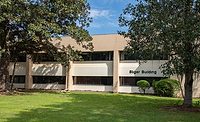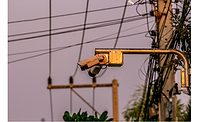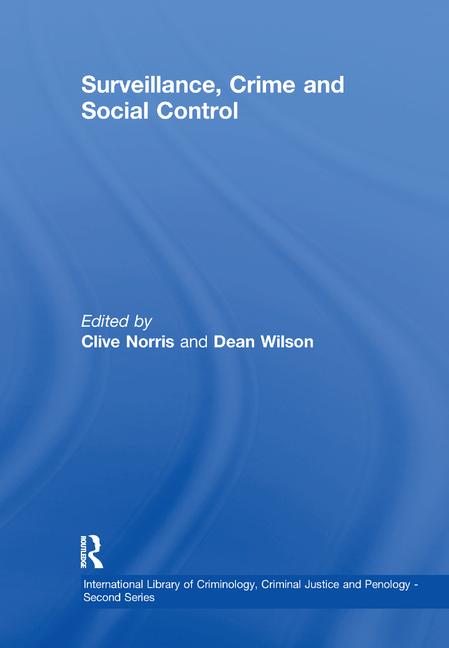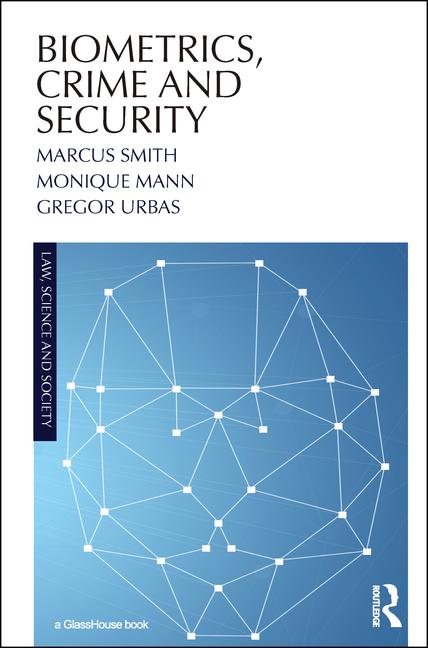Mesa, Arizona is the state’s third-largest city and acts as a gateway into waterways and trail systems. Located in the East Valley near Phoenix, Mesa is home to 550,000 residents and hosts 4.5 million annual visitors, a perfect blend of modern-day urban culture and the ultimate desert playground.
Paving a path for city-wide collaboration
The Mesa Police Department (MPD) aims to take a proactive and innovative approach to policing. Over the years, the city has invested in various technologies that improve the safety of people, businesses and everyday life.
The challenge faced by Mesa and MPD was that many of these technologies were set up and operating independently. Everyone from the Transportation team and Municipal Security personnel to 911 operators and dispatchers had access to their own systems. This kept data and departments siloed and limited the MPD’s efficiency in responding to incidents and handling investigations.
During an emergency call, dispatchers could monitor the computer-assisted dispatch (CAD) information and automatic vehicle location (AVL) data to coordinate response with nearby officers, but they didn’t have access to live 911 calls, license plate recognition system data, or over 800 city-owned cameras that only certain teams monitored.
Similarly, investigators would have to make individual requests to various municipal departments to have access to data and video following an incident. MPD also couldn’t review any footage from over 350 traffic cameras because it was an independent system used exclusively to monitor live traffic flow. No recordings were available.
According to Ryan Stokes, Mesa Police Department Lieutenant, “Our goal was to make it easier for our operators to gather and share real-time information with our responding officers. Because when we’re talking about addressing critical incidents, having situational awareness 30-90 seconds before arriving on the scene is a huge advantage.”
After touring other real time crime centers (RTCC), Lieutenant Stokes and other key stakeholders at MPD were ready to upgrade their emergency response capabilities. MPD made plans to launch their own RTCC using the Genetec Citigraf strategic decision support system and Genetec Clearance digital evidence management system.
Connecting all public safety technology within Citigraf
Today, the Mesa RTCC is a 3,000-square-foot public safety command center, equipped with video walls and other security technology. Within the first 12 months of the opening of the RTCC, the MPD solved over 930 felony and 640 misdemeanor cases. They also recovered over 268 stolen vehicles. Moreover, they have expedited their emergency response and helped officers be better prepared when arriving on the scene.
The RTCC operations use Citigraf, which acts as the main visualization dashboard for emergency response and investigations. The solution currently gives operators access to 800 city cameras, 180 traffic cameras, eight mobile Police Observation Devices (PODs), real-time AVL data, live 911 calls, real-time drone video and other technologies.
“Previously, 99% of what we did before was after-the-fact investigations. Aside from the CAD and AVL systems, we didn’t have access to more information. Now, when an emergency call comes in, our RTCC operators hear the live 911 call and can click a button to transfer the call to Citigraf. Our RTCC operators hear the actual live conversation, see the caller location and all CAD comments as they are entered from the 911 operator and police dispatcher,” explained Lieutenant Stokes.
Boosting operator efficiency with one intuitive visual dashboard
Mesa RTCC operators are taking real-time response to the next level. Beyond seeing all cameras, patrol cars and emerging events on a city map, they can quickly address emergencies and extend critical information to patrol officers.
For instance, if an operator is working on a specific call, clicking on the caller’s address will pull up data from the CAD system. The operator can then view all prior calls received from that location and any notes associated with those past incidents.
Operators can also move from live view to a five-minute replay (or time delay of their choosing) to see what happened. They can sync that replay across all 16 cameras on display. If they notice that a suspect is on the move, the operator can simply click one of four arrows within the camera’s field of view to jump over to the next camera.
In some emergency situations where drones are launched out on patrol, RTCC operators are alerted so they can access live footage to get an aerial view of the situation. This is useful during bigger city events where larger crowds gather.
During those large-scale events, the city can also deploy camera PODs to extend surveillance in specific areas. All video feeds connect back into Citigraf, so operators have more eyes on the ground. They’ve also extended access to the solution to the Police Chief and to the Emergency Operations Center (EOC), who can remotely monitor any major situations or community gatherings, without disrupting RTCC operations.
Amplifying resources and community collaboration
The RTCC is primarily responsible for assisting law enforcement during emergencies. But when the team isn’t responding to an emergency, they’re still making the most of the technology to help MPD solve cases. They assist in post-incident investigations, helping the detectives use data in Citigraf to retrieve evidence and use the Clearance camera registry feature to speed up evidence canvassing from businesses and residents within the city.
“In the past, if someone reported a serious event, an officer would respond, take pictures, record statements, and open an investigation. It could then take another two or three weeks of trying to locate witnesses and review video in the area. Now, with Citigraf and Clearance, we can close cases faster,” explained Lieutenant Stokes.
Building a safer city alongside supportive partner
Moving forward, the MPD has big plans for the expansion of its RTCC. From adding a mobile app in police vehicles to integrating more cameras and technologies within the platform, there’s a lot still underway and slated on their roadmap.









